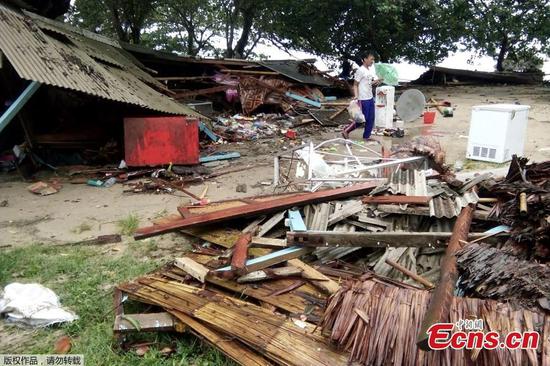Archaeologists discovered bones of infants and adults at a ruins site in north China's Inner Mongolia Autonomous Region, which are believed to be remains of human sacrifices, local authorities said.
Five complete human skeletons and a few skulls were found buried at the bottom of a round pit, which is three meters deep, according to the regional institute of cultural relics and archaeology.
The research found the skeletons belonged to 14 victims including some infants. The adult victims were all females, while the gender of infants could not be identified.
Archaeologists spotted chop and cut marks on some of the human bones, evidence of violent deaths.
The pit is beneath a large building complex, northwest of the imperial palace ruins of Shangjing, which is the first capital of the Liao Dynasty (916-1125).
Tests showed the building complex and the sacrificial pit date back to a period between the late Liao Dynasty and early Jin Dynasty (1115-1234).
Researchers excluded the possibility that the pit was a tomb.
A rectangular pit near the human sacrificial pit was also found. Skeletons of three horses, bones of camel hooves, skulls of cattle and dogs and a few incomplete human skulls were discovered inside.
Archaeologists said they have never found sacrificial pits under royal buildings during the same period, let alone human sacrificial pits.
Dong Xinlin, who heads the archaeological team, said they estimated that the people and animals might have been offered as sacrifices for the construction of the building complex. The buildings' function is still unknown.
The Liao Dynasty was founded by the nomadic Khitan who ruled the northern part of China. Shangjing, now located in Bairin Left Banner in Inner Mongolia, was first built in 918. The excavation on the ruins site started 12 years ago.


















































